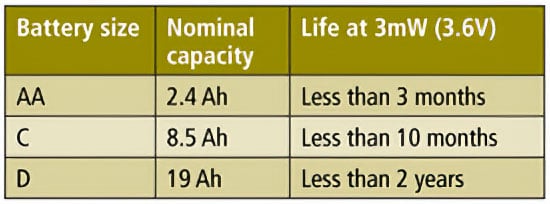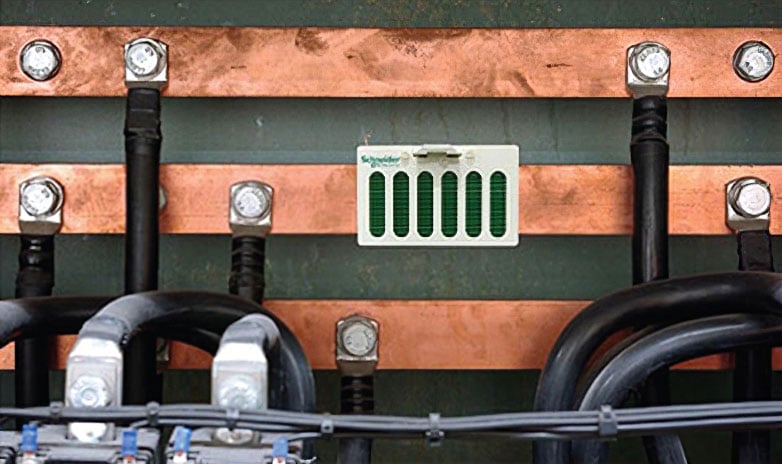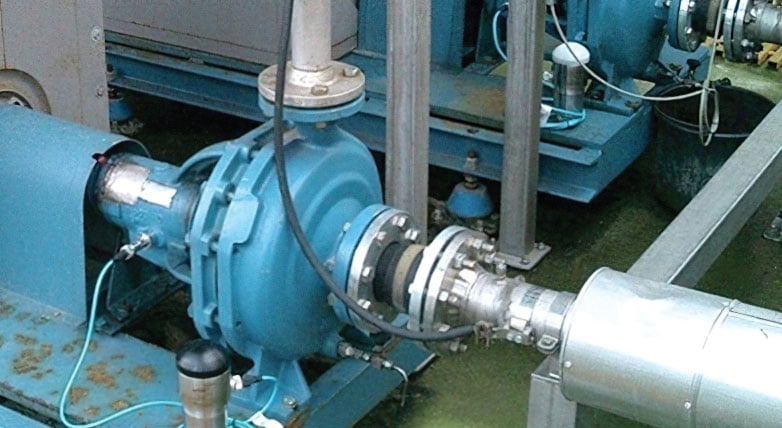This post was authored by Roy Freeland, president of Perpetuum Ltd and past co-chair of the ISA100.18 Power Sources Working Group.
There are some exciting high-growth projections for wireless sensing for the automation industry. More sensors mean more process efficiency, lower operating costs, lower maintenance costs, higher reliability, and greater safety. Wireless sensing provides the opportunity to install masses of sensors with virtually no cost of installation by reducing the need for cables carrying the signals from the field to the control room.
Wiring costs can easily be 80 percent or more in a hazardous area, of the total cost of installing a new sensor. Who wouldn't like to get the same job for one-fifth of the cost or five times as many sensors for the budget? And it isn't just the cost of the installation; there are many cases in which a plant has to be shutdown to facilitate installation, adding another massive sum to the cost of new sensors.
Most of us routinely use wireless (cell phones, Wi-Fi) for communication, and the potential for M2M (machine to machine) wireless communication is considered to be even larger. Wireless transmission of sensor data is now well established as a reliable method of monitoring industrial plants. It is even being perceived by some users as more reliable and maintenance-free than hard wiring.
This new approach to automation has been made possible by the convergence of new technologies:
- Low-power electronics, including microprocessors with sleep modes
- RF transmission systems that use digitally encoded signals (e.g., digital television and Wi-Fi) with an order of magnitude less power required than older analog systems
- New energy harvesting techniques
So why is there so much interest in energy harvesting? Simply, you cannot get the full benefit of wireless unless the power source is also wireless. This means you need either a battery or some form of energy harvester. Until recently, the usual power source available to power a wireless sensor node or network (WSN) has been batteries. With their limited and non-deterministic lifespan, hazardous content, shipping, and disposal requirements, batteries alone are not likely to provide a power source that will last the life cycle of the WSN application without maintenance intervention. The ideal solution is an energy harvester that is "fit and forget" and will have a lifespan in excess of the WSN that it is powering.
Energy harvesting is the extraction of usable energy (usually converted into electrical energy) from otherwise wasted energy available in the environment. On the macro scale (MegaWatts - MW) this includes hydro-electricity, wave power, solar panels, and wind turbines. However for wireless sensing, we are talking about harvesting immediately available energy such as vibration, heat, light, and RF energy to produce milliWatts - mW.
Power requirements for WSNs
Whether the power source is an energy harvester or a battery, it is important to minimize power consumption. Much can be done to minimize average power requirements, for example reducing reporting frequency. If a wireless system is being used for machinery condition monitoring, then it is unnecessary to specify the transmission of full vibration spectra every minute, when it is replacing a man on a bicycle with a hand-held device who goes around once a month (provided it is not raining and he has nothing more urgent to do). Also parameters can be monitored and analyzed in the WSN, and it can be programmed to transmit alarm signals only when there is a problem.
To illustrate the issues, this article takes the example of a WSN that requires an average power of 3mW to compare various options. This is not untypical of either a frequent reporting requirement (such as several times per minute) or a high-data requirement (such as complete vibration spectra).
The following table shows the theoretical life of standard-sized cells from a leading Lithium battery manufacturer. In practice, the theoretical capacity is reduced by such factors as the need for intermittent high currents for RF transmission, self discharge, and low temperatures. Some newer designs perform closer to theoretical capacity and may include energy storage to help with the peak power requirements of WSNs.

Energy harvester power
So what are the options for energy harvesters to deliver 3mW? The following are systems that are available today, and they represent each of the main types of energy source that can be used in practice in many types of plant and other machine applications to provide the required power. Each of these uses a source of energy that is readily available in many but not all applications; however with this choice, it should be possible to select a suitable device for the vast majority of applications.
- Vibration: Perpetuum's vibration harvester will produce 3mW from about 40-50mg of vibration, depending on the exact frequency. Its bandwidth is important to ensure adequate coverage of a wide range of machines.
- Heat: Micropelt's thermal harvester will produce 3mW from a suitable heat source at about 75°C assuming ambient temperature of 25°C. The rate of heat transfer is important and installing a probe in hot liquid flow reduces the temperature required for 3mW to 55°C.
- Photovoltaic: G24 Innovations Photovoltaic Dye sensitized thin film photovoltaics require an area of 233mm x 135mm to produce 3mW in a typical industrial indoor environment with a light level of 500 lux.
- RF power transmission: Powercast's RF transmission system requires a 3W transmitter to produce 3mW of usable power at a range of 1.2M (4ft). This system is technically wireless power transmission rather than energy harvesting.
The ISA100.18 Working Group helped to prepare standards and information documents on power sources for WSNs. Key objectives were to define specifications for the interchangeability of various power sources, including batteries, energy harvesters, and other possible types, such as 4-20mA loops so users can compare different harvesters and choose the optimum power source for each application. The working group cooperated with a range of organizations, including VDI and NAMUR on battery standards for WSNs and other organizations using 802.15.4, such as WirelessHART and Zigbee as well as other low power wireless protocols. The Standard has now been published as IEC 62952-3:2017 :Power sources for a wireless communication device - Part 3: Generic energy harvesting adapter module.
Practical applications
End users who have trialed battery powered WSNs have generally become very enthusiastic about the benefits. However, we are now seeing views being expressed that the power supply issue must be resolved and that changing batteries is not acceptable in most industrial situations. This is not only because of the cost of the work to order, stock, organize, and physically replace batteries, but also, particularly in hazardous area and inaccessible areas, there is an understandable reluctance to send maintenance staff into potentially dangerous areas. The major systems builders are, therefore, almost without exception working on offering energy-harvesting-powered options for their WSNs.
A good example is the GE Bently Nevada Insight mesh wireless condition-monitoring system installed as a pilot at Shell’s Nyhamna Gas Plant for predictive maintenance. This was a site built in Norway to process natural gas from the Ormen Lange field in the North Sea and pump it across to England. Although it was a greenfield site, it was found that the cost of hard-wiring was excessive to monitor most of the plant. Therefore a wireless system powered by vibration energy harvesters was used on a number of machines to provide full vibration data from accelerometers to the central data processing system. Installed in power generating plant, it is a fascinating insight into the business case that it is economical to use vibration energy harvesters to produce milliwatts of power in a plant that is producing megawatts.
Perpetua’s thermal harvester is also approved for this GE system as well as being widely used with Emerson process instruments. Micropelt’s thermal harvester is being used to monitor the temperature of power busbars to identify critical situations. Any rapid rise in temperature will cause an alarm to be transmitted wirelessly to a control room. Perpetuum’s latest vibration energy-harvester-powered systems have been widely installed in trains to provide remote condition monitoring of bearings, wheels and track.
Newer installations with the latest vibration energy-harvester-powered system have been installed in power stations. It is notable that previous experience with the power available from vibration harvesters leads to a decision to use one harvester to power a node with four sensors rather than the previous ratio of 1 to 1 for harvesters and sensors. It is a fascinating insight into the business case that it is economical to use vibration energy harvesters to produce milliwatts of power in a plant that is producing Megawatts.
Micropelt's thermal harvester is being used to monitor the temperature of power busbars to identify critical situations. Any rapid rise in temperature will cause an alarm to be transmitted wirelessly to a control room.
National Instruments recently started to offer vibration and photovoltaic solutions to powering their wireless devices.
 Temperature monitoring WSN powered by thermal harvester.
Temperature monitoring WSN powered by thermal harvester.
 Vibration energy-harvester-powered-wireless sensor node installed for machinery condition-monitoring at a gas plant.
Vibration energy-harvester-powered-wireless sensor node installed for machinery condition-monitoring at a gas plant.
Typical wireless sensor nodes have a duty cycle with varying power requirements ranging from "sleep" or "quiescent" modes, where little is happening and power consumption may be of the order of 0.1mW or less, to brief bursts of higher consumption when microprocessors are handling and interpreting data with peaks of power of 100mW or more when the RF transmission occurs. The energy harvester does not normally supply the peak level of power continuously but charges up a capacitor, supercapacitor, or rechargeable battery to provide the peak-power requirements. The important calculation is, therefore, the average power required over the complete duty cycle, including inactive periods.
The future
The benefits of using wireless for automation monitoring and eventually control are so strong that practical solutions for suitable power sources will continue to develop. Energy harvesting has many different forms that have been fully demonstrated to be ideal solutions for indefinite long-term powering of WSNs without maintenance. Although the power requirements of some electronics will continue to fall, we are probably getting close to the limit of low-power RF transmissions as well as the chemical energy density possible in primary battery cells. The energy available from various energy harvesting techniques in most applications already significantly exceeds the power requirements of existing WSNs. The recent rush to design in energy-harvesting options for battery-powered WSNs will not only lead to much wider use of energy harvesters but also ensure much wider use of low-cost wireless sensing with all the benefits of increased monitoring for plant safety and efficiency.
The benefits of energy harvesting are very obvious and are driving massive amounts of research and development activity. Some of this activity gets publicized in a manner which is at best misleading. There have been claims for world records in vibration energy harvesting that have needed very high levels of vibration only available in laboratories. There have been repeated announcements about harvesting power from ambient RF signals; extraordinary claims which feature implications of recharging cell phones from ambient Wi-Fi signals. Claims are made assuming that with modest improvements currently achieved levels will be dramatically improved like a version of Moore’s Law that will lead to amazing rewrites of the laws of physics.
Simple questions such as whether the required level of ambient RF energy is within safe limits for humans or which machinery is known to vibrate at 4g will assist in exposure of these wild claims, which have come from normally reputable international companies and academic institutions.
About the Author
Roy Freeland, is president of Perpetuum Ltd and past co-chair of the ISA100.18 Power Sources Working Group. He has wide international experience in running engineering and electronics companies in the U.K., the U.S., Sweden, France, and Canada. He was chief executive of United Industries Plc, a British Publicly Quoted Group, and managing director of Meggitt Electronics, as well as holding senior group management positions with Spirent and Spectris.
A version of this article also was published at InTech magazine.



